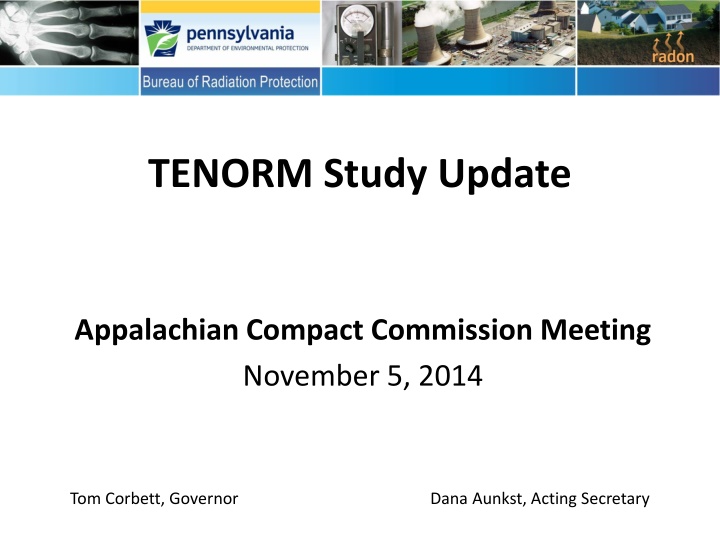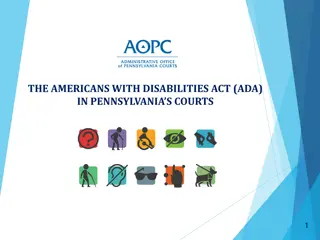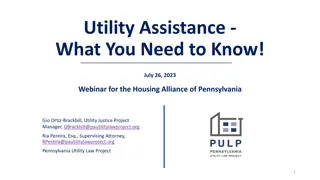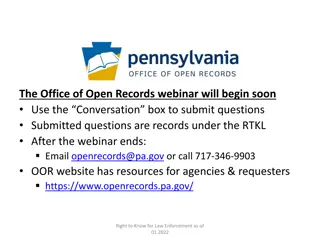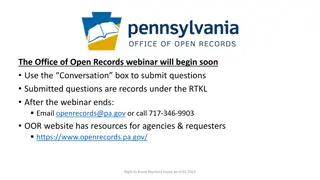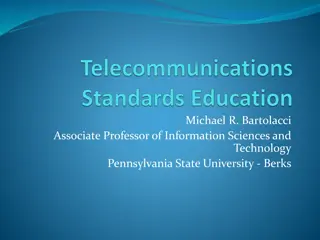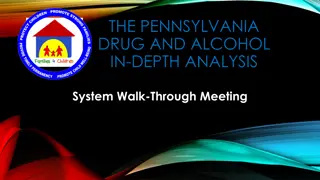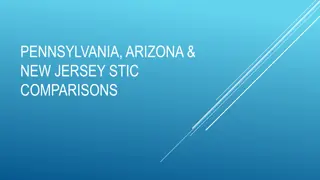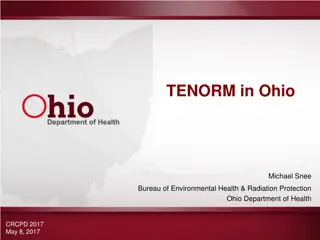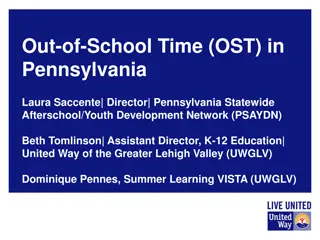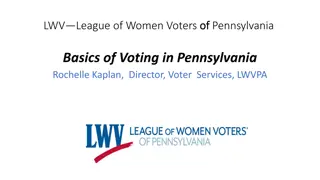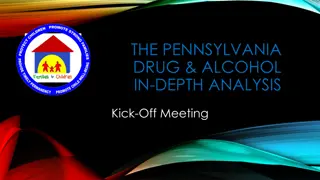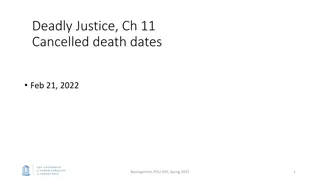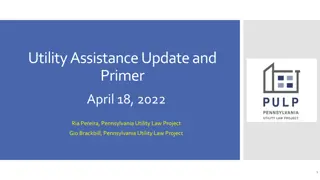Comprehensive Overview of TENORM Study Update in Pennsylvania
The TENORM Study Update in Pennsylvania focuses on the management of Technologically Enhanced Naturally Occurring Radioactive Material (TENORM) generated from natural gas exploration and production activities. The study addresses potential worker and public radiation exposure, environmental contamination concerns, and waste disposal issues. It includes sampling of various sites such as water treatment plants, landfills, well pads, and gas storage sites, with detailed analysis of samples for alpha, beta, and gamma radiation levels. Key findings from completed work in 2013 are highlighted, emphasizing the importance of monitoring and regulating TENORM to ensure safety and environmental protection.
Download Presentation

Please find below an Image/Link to download the presentation.
The content on the website is provided AS IS for your information and personal use only. It may not be sold, licensed, or shared on other websites without obtaining consent from the author.If you encounter any issues during the download, it is possible that the publisher has removed the file from their server.
You are allowed to download the files provided on this website for personal or commercial use, subject to the condition that they are used lawfully. All files are the property of their respective owners.
The content on the website is provided AS IS for your information and personal use only. It may not be sold, licensed, or shared on other websites without obtaining consent from the author.
E N D
Presentation Transcript
TENORM Study Update Appalachian Compact Commission Meeting November 5, 2014 Tom Corbett, Governor Dana Aunkst, Acting Secretary
Background Technologically Enhanced Naturally Occurring Radioactive Material TENORM, a naturally occurring radioactive material not subject to regulation under the laws of the Commonwealth or the Atomic Energy Act of 1954, whose radionuclide concentrations or potential for human exposure have been increased above levels encountered in the natural state by human activities. PA DEP Regulations, Title 25, Chapter 271
Background Generation of TENORM has increased significantly. This is mainly due to the recent expansion in natural gas exploration and production in Pennsylvania. There are many issues with TENORM that must be managed effectively. These issues include: Potential Worker Radiation Exposure Possible Public Radiation Exposure Environmental Contamination (soil, water, etc.) Waste Disposal
Site Categories for Sampling Waste water treatment plants (WWTPs) Landfills Waste sludge loads to landfills Well pads Underground natural gas storage sites Gas-fired electricity generating facilities Compressor stations Beneficial use sites Decommissioned well casings
Work Completed in 2013 184 Site visits 114 Locations 1,000 Samples analyzed 25 WWTPs / 73 visits (3 rounds) 48 Landfills (9 extensively sampled) 1 Set of facilities to evaluate the effect of waste sludge transport on external radiation levels
Work Completed in 2013 20 Well pads / 41 visits 13 Beneficial use sites 1 Decommissioned well casings disposal site 7 Facilities that compress, store and utilize natural gas
Sample Types Natural gas samples Liquid samples (i.e., frac, flowback and produced water) Solid samples (i.e., drill cuttings, proppant, sludge, soil and sediment) Radiation surveys Swipe samples
Sample Analysis The samples are being analyzed for the presence of alpha, beta and gamma radiation (gross counting and spectroscopy). The gas is being sampled for the presence of radon-222.
Field Work in 2014 Well pad sampling (23 visits to 11 pads) Continued landfill leachate collection (5 facilities) Landfill bulking operations (2 facilities) Beneficial use sites (4 sites) Gas-fired power plants (1 facility) Gas storage facilities (4 facilities)
Field Work in 2014 Compressor stations (1 facility) Gas processing facilities (1 facility) Wastewater impoundments (2 facilities) Evaluating the effect of transport on sludge external radiation levels (5 events)
Field Work in 2014 Landfills recovered deployed radon detectors (8 facilities) Landfills waste bulking (2 facilities) Well Pad completed, 1 production phase gas collection for radon Well Pads ambient gamma surveys of areas with buried rock cuttings
Lessons Learned Well pad field work schedule changes Logistical and technical challenges Science-based study plan - had to make some adjustments and additions in numbers of sites
Schedule Field work has been completed as of August Sample analysis, data analysis and report preparation from March through fall 2014 Internal DEP final review now on-going Peer review fall 2014 Final study report planned for completion in 2014.
TENORM Study Information Study-related documents are available at www.dep.state.pa.us Keyword TENORM Updates are being provided to the appropriate DEP advisory committees and other stakeholders
David J. Allard, CHP PA DEP Bureau of Radiation Protection PO Box 8469 Harrisburg, PA 17105-8469 Tel: 717-787-2480 djallard@pa.gov
